How has the tonal profile of music changed since 1960? With true:balance, we can give you a visual insight into audio history.
It doesn’t take a pair of golden ears to know that the audio quality and character of music has changed over the years. Ever since artists like Frank Sinatra, Ella Fitzgerald, Elvis and The Beatles first put recording head to magnetic tape, the tools and know-how behind audio processing have been improving.
With the latest digital tools, we can also see and analyze that character in new ways. For this article, we’ve inspected some typical songs from musical history – from 1960 to now – using our plug-in true:balance, to reveal how spectral balance has changed with the times.
Sometimes known as ‘Tonal Balance’, Spectral Balance describes how evenly audio is distributed over the frequency spectrum. Sounds that have an equal amount of energy per octave are generally more pleasant-sounding to our hearing system.
In general, this sort of frequency profile we get in a piece of music that we say has a ‘good spectral balance’. We built true:balance to provide an insight into how a signal measures up to this ‘ideal’ reference targets.
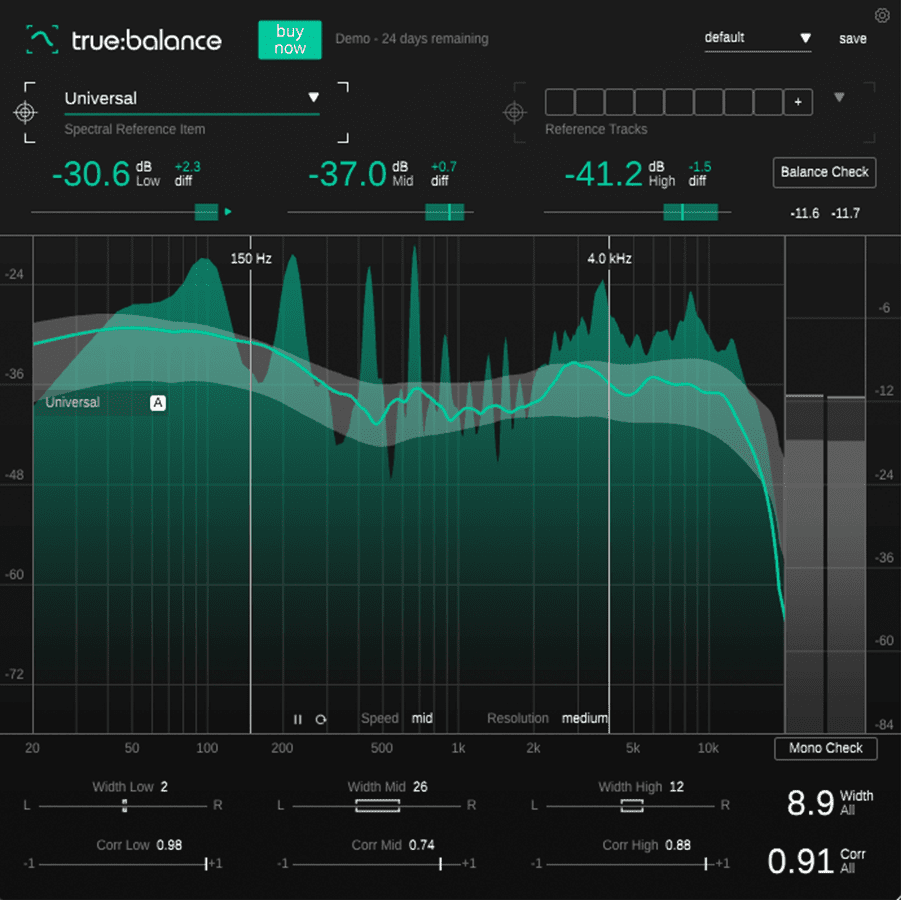
Ed Sheeran – Celestial (2021). This track looks great across the spectrum.
In particular, there was a distinct lack of high-end information in tape recordings during the 60s. As time went on, we were able to keep more high end intact, thanks to advancements in microphones, recording consoles and other audio technologies.
With the Woodstock stages dismantled and the last breath of the 60s spent, a new decade of music began. With true:balance, we can observe some trends in the spectral balance of the records of the 1970s that are a direct response to the output of the previous era, most notably a high end boost to compensate for the limitations mentioned above.
Using switchable EQs, engineers attempted to make records sound more open and crisp by coaxing out the 7kHz area and above, which you can see in Stevie Wonder’s Superstition below.
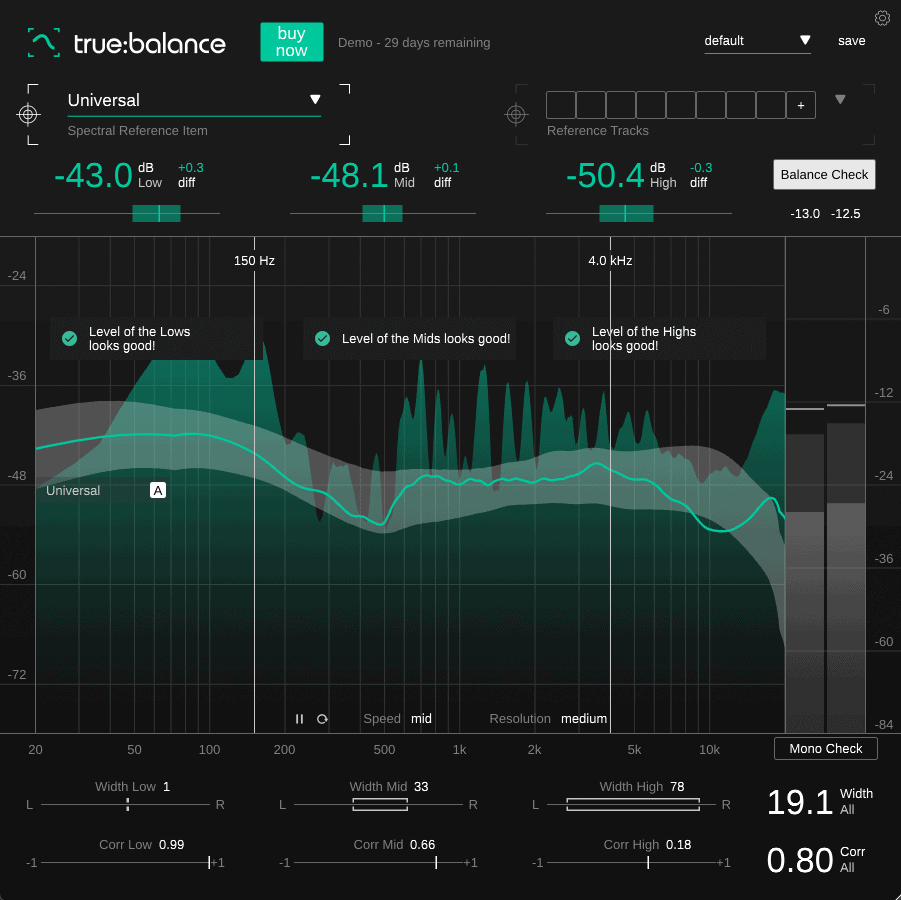
Stevie Wonder – Superstition (1972). ). The Grammy Award-winning groove shows visible tweaking in the 7kHz area and above.
Engineers in the 60s tended to roll-off very low end information in a track, knowing that it could potentially prove too much for audio systems, for example jogging the needle of a record player. In comparison to the woofer-worrying electronic music of today, track arrangements in the 60s weren’t anywhere near as bass driven, but that’s not to say it wasn’t an important element of a record nonetheless.
Apparent in the songs from the 60s that we analyzed was a peak around the 200Hz point in the frequency spectrum. You can see this represented in the spectral distribution of Marvin Gaye’s I Heard it Through the Grapevine in the image below.
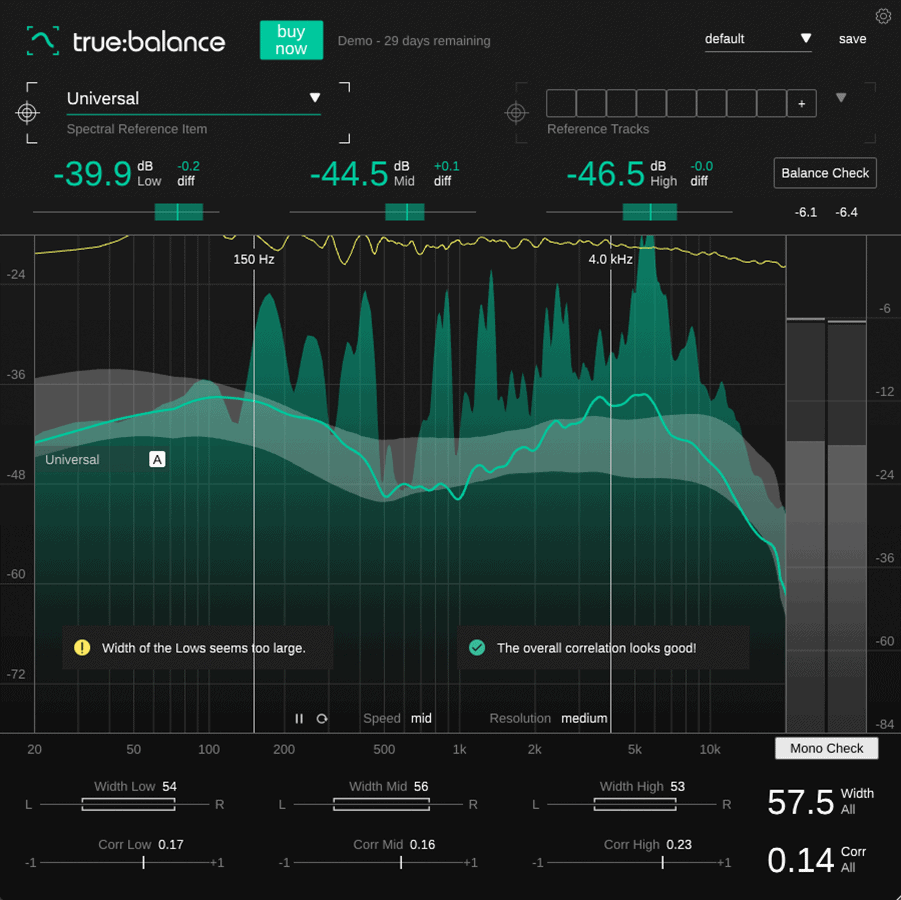 Marvin Gaye – I Heard it through the Grapevine (1968). Although the track is underpowered below 150Hz, there’s a clear 200Hz spike to compensate.
Marvin Gaye – I Heard it through the Grapevine (1968). Although the track is underpowered below 150Hz, there’s a clear 200Hz spike to compensate.
In contemporary music and mixing, there is some debate around whether the 200Hz area is responsible for a muddy or boxy sound, and it is often notched out of kicks and basses for that reason. However, engineers in the 60s had limitations when working with very low frequencies, so this area may have been targeted and boosted in pursuit of a fuller low end.
Staying on the ground floor of the frequency spectrum, let’s turn our attention to the modern recording trends. A lot of popular music today is either influenced by sub genres of hip hop like trap and drill, in which speaker-rattling 808s and sub bass are fundamental elements, or borrows from electronic music production practice where bass is a driving factor.
Taking these stylistic influences into consideration, it’s no surprise that we can see a clear trend of powerful low end in the spectral balance of modern music. In fact, after turning true:balance onto multiple tracks from the 2020s, the plugin’s Balance Check feature analyzed the spectral distribution of the signal and gave us a clear readout: too much low end!
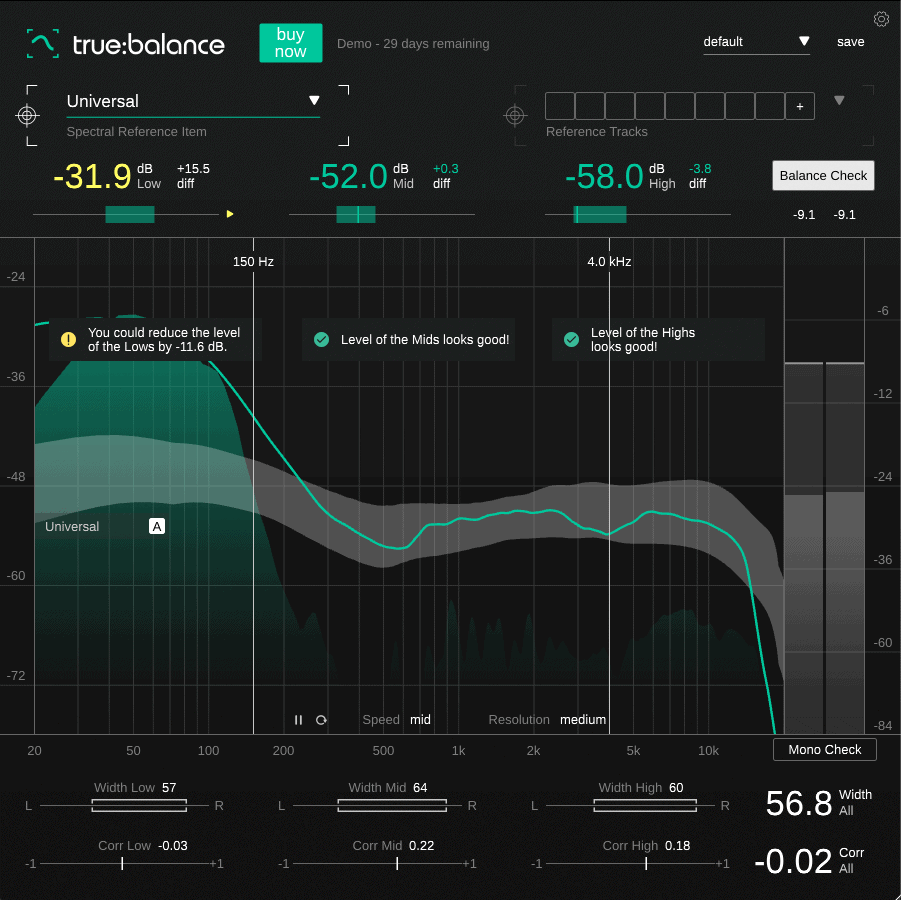
Phony People – Fkn Around (2020). true:balance identifies heavy low end information in the track and makes a recommendation.
The quality and format options of the consumer’s music listening experience has changed vastly over the past 60 years, and it’s also worth noting that small speaker systems are much more capable of accurate bass replication than even as recently as five to ten years ago. Music is predominantly listened to on headphones these days, and the improvement in bass frequency response of most consumer-grade models has made for a more hard-hitting low end experience.
As well as being able to give us key insights into frequency distribution, true:balance’s channel data section also displays everything you need to know about the stereo width and correlation of a mix, and, hence, the mono compatibility.
In the early days of recording, phasing issues were commonplace due to the necessity of recording a band or artist live. Multitracking was developed in 1955, pioneered by Les Paul and Mary Ford, but didn’t become a creative tool in its own right until The Beatles and The Beach Boys began experimenting with the technology in the mid 60s. Even then, they were constrained to four-track recorders, which meant mic positioning options were limited. As a result, phase cancellation was widespread in the 60s and 70s, particularly in the low end.
This is particularly noticeable in Marvin Gaye’s Heard it Through the Grapevine. true:balance’s adjustable low, mid and high bands, combined with their integrated correlation meters, are a great combination when assessing phase cancellation across the frequency spectrum. In this case, it shows an extremely wide low end, and the inevitable phase correlation issues that come hand in hand with such wide bass.
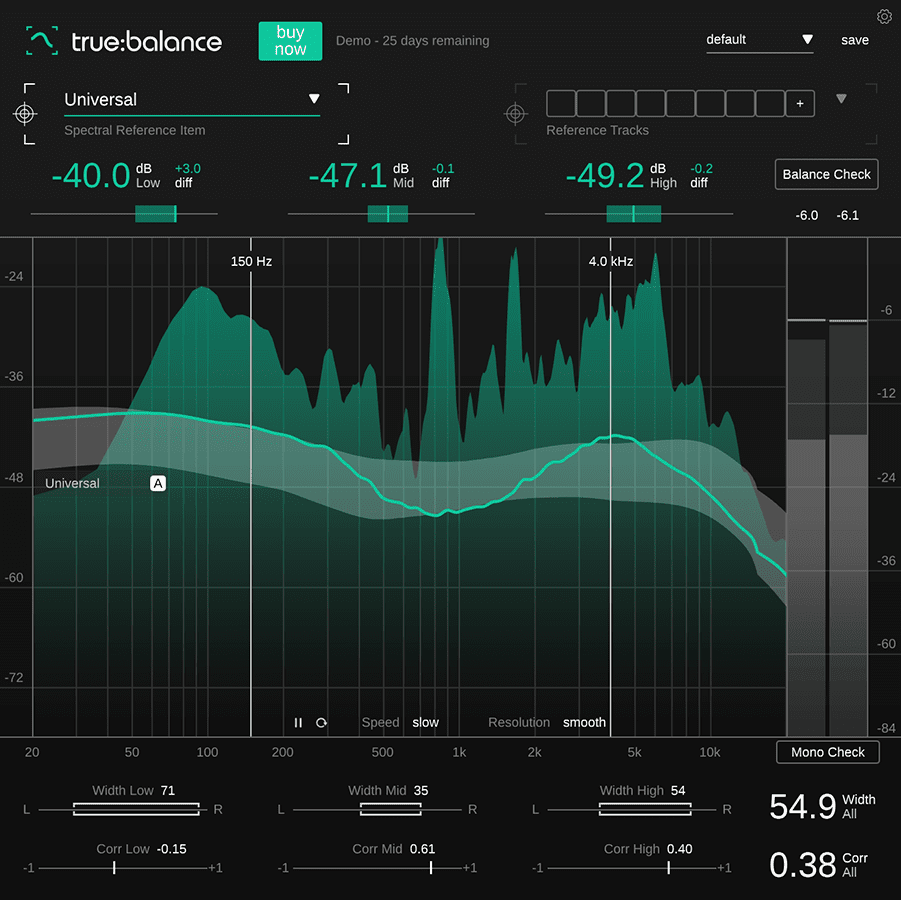
Marvin Gaye – I Heard It Through The Grapevine (1968). Width isn’t necessarily a bad thing, but phase cancellation is
Today, many producers and engineers stick to the golden rule of keeping everything in the low end straight down the middle of the stereo field, in order to avoid said phase correlation issues. This is much easier than it used to be, thanks to better recording equipment, more powerful software and more refined recording and mixing techniques.
In nearly all examples of music from our current decade, we can see that information below 150Hz is almost completely mono, with great positive stereo correlation to boot. Take a look at Eliza Rose’s 2022 number one, B.O.T.A for a textbook example of monoed bass.
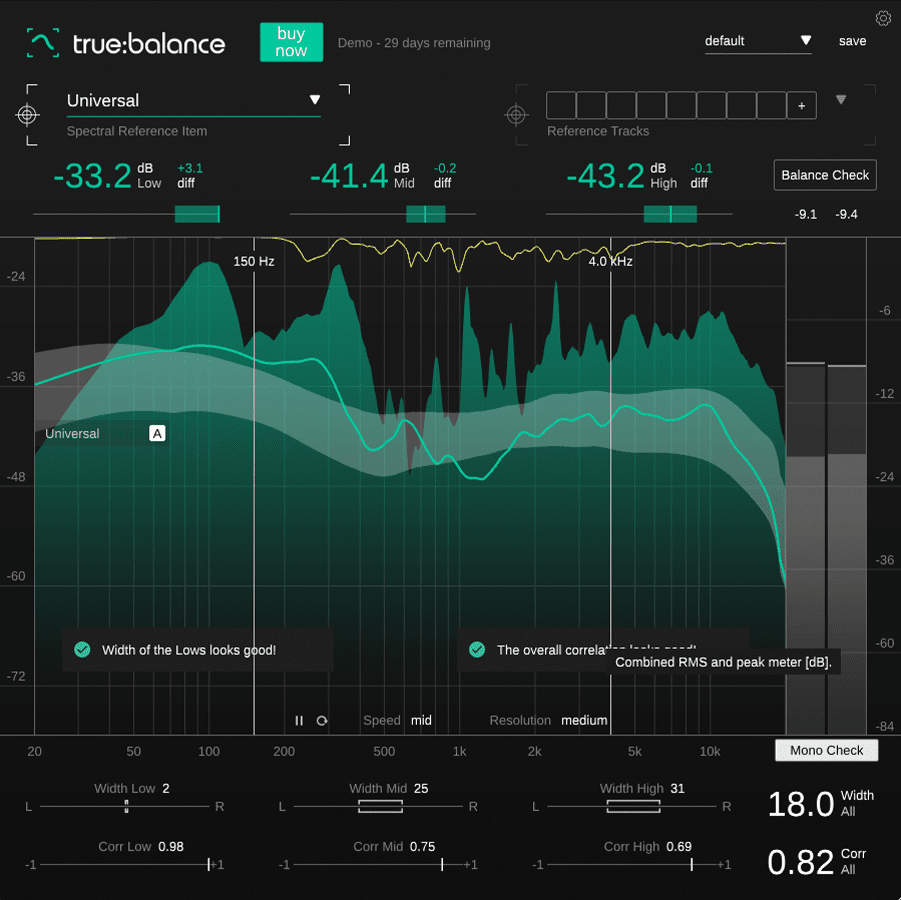
Eliza Rose – B.O.T.A (2022). The narrowest of them all.
With complete control over where each element of the track sits in the mix, today’s producers and engineers are able to disperse sounds across the full range of the stereo field in order to give each their own space. While some elements like vocals or bass are generally acknowledged to perform best in the center, you can expect everything else to be nudged right or left in varying amounts.
In the 60s, however, engineers relied on LCR panning during mixing, which permitted them to assign sounds to one of three positions – left, center or right. Each one was a “hard” position, which meant you couldn’t set a guitar part as 20% left, for example – it was either fully left, or it wasn’t left at all.
The result of this was that some sounds ended up solely belonging to the left or right channel, in an effort to separate them from other sounds that were occupying the same frequency range. For instance, in Aretha Franklin’s Respect, you can hear the kick on the left and the bass on the right, which is something which would be extremely uncommon in today’s mixes.
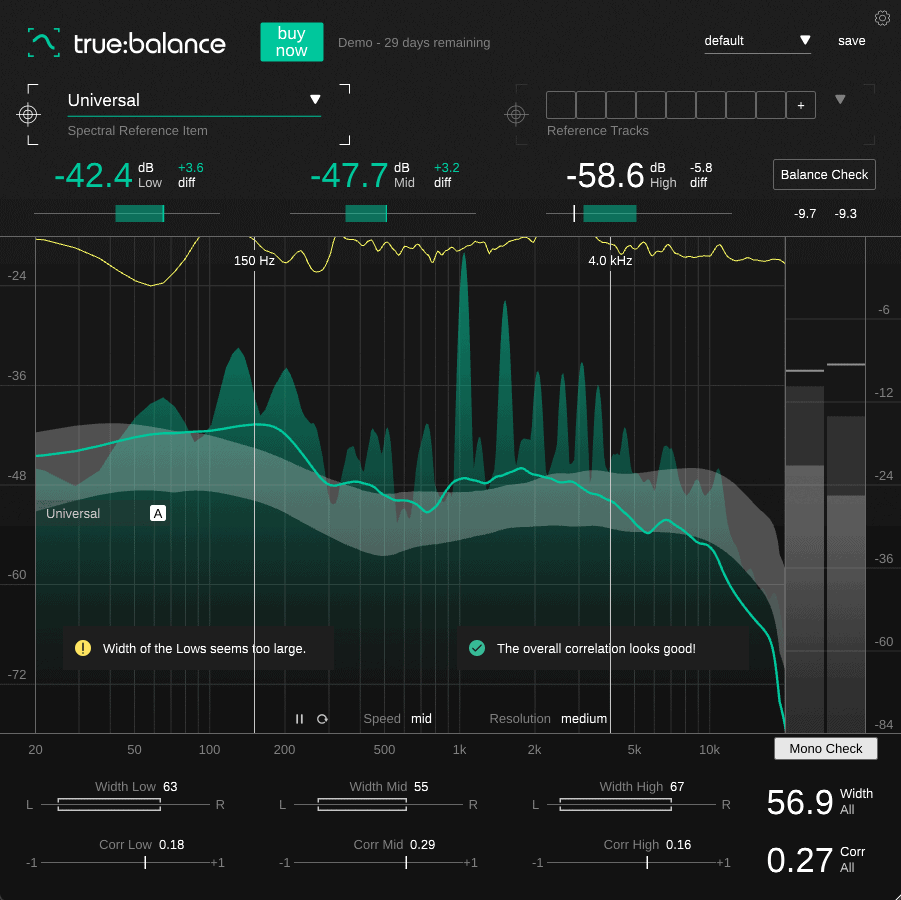
Aretha Franklin – Respect (1967). Proof that stereo audio has come a long way since the sixties.
The introduction of high precision analysis technology, along with the need to adhere to uniform standards for streaming platforms, has contributed to improved tonal balance in music. The spectrums of 60s records look like McDonalds golden arches, with high and low roll-off and a relatively acute dip in the mids making up an erratic profile. We’ve seen this distribution flatten over time to become more balanced, as is evident in the example of Ed Sheeran’s Celestial at the top of this article.
However, while we can observe more control and consistency across the board, there will always be exceptions that shouldn’t work on paper, but do. Fred Again’s Berwyn, for example, is demonstrably overpowered in the low end department, but sounds fine on playback.
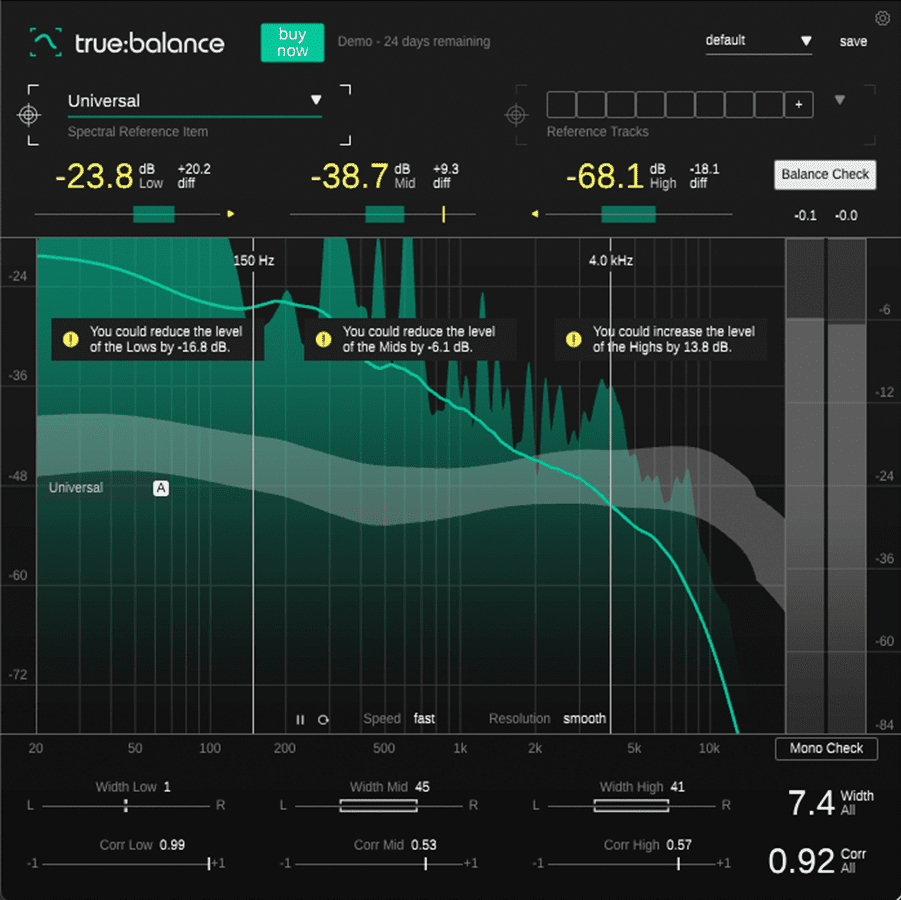
Fred Again – Berwyn (2022). true:balance recommends as much as 16.8dB of reduction in the low end, but the electronic track is intentionally bass heavy.
Although we’ve shown that there are clear trends and patterns in spectral balance throughout the ages, there’s always room to factor in the specific features or recording circumstances of an individual track. Notwithstanding anomalies, visual analysis tools like true:balance will always give you a strong reference point for your mixes, which will help to optimize spectral balance and mono compatibility.